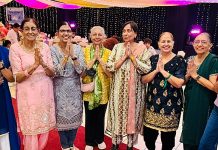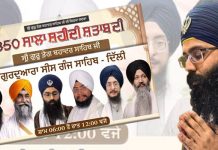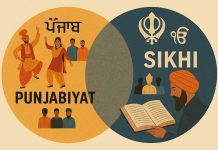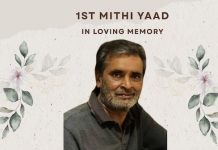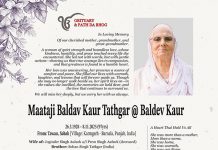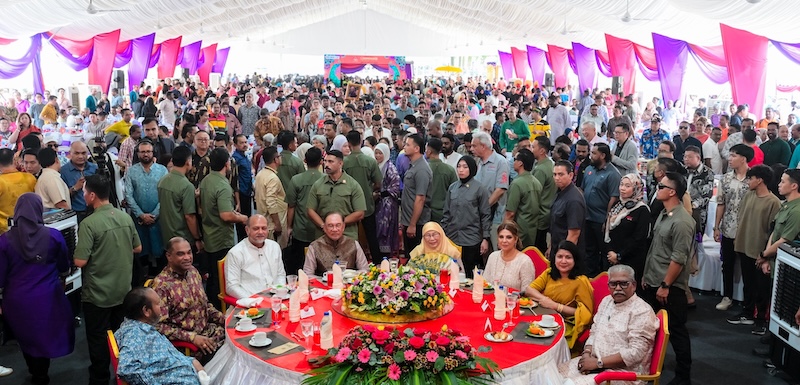
By Dr. B. S. Bains | Opinion |
Across India and Southeast Asia, the festival of Diwali—known in Malaysia as Deepavali—has long symbolised the triumph of light over darkness and good over evil. Yet beyond its glowing lamps lies a deeper story of evolution—of faith, migration, and meaning. How did a festival born of ancient Hindu epics become part of Sikh history and later, a shared cultural celebration in Malaysia?
From Kurukshetra to Kanyakumari — The Historical Thread
The roots of Diwali stretch deep into India’s ancient soil. The Ramayana recounts Lord Rama’s return to Ayodhya after defeating Ravana, ruler of Lanka. The Mahabharata, meanwhile, unfolds in Kurukshetra—once a part of Punjab, now in Haryana—linking the story to the spiritual geography of northern India.
Southern India, including Kanyakumari, carries traces of Ravana’s legacy. These interconnected tales show how the spirit of Diwali slowly spread across regions, from the north to the south, each adapting the story to its own rhythm. Over time, as trade and travel wove India together, Diwali’s flame illuminated diverse traditions.
The Sikh Connection — From Diwali to Bandi ChhorDivas
For Sikhs, the connection to Diwali is not mythical but historical. The day of Bandi Chhor Divas—the Day of Liberation—marks Guru Hargobind Sahib Ji’s (6th Sikh Guru) release from imprisonment in Bhopal (1,230km from Amritsar) alongside 52 kings of different regions of India. Although this event did not originally fall on the same date as Diwali, the closeness of the occasions led to shared celebration. In the similar note the 52 kings when tgeyreturn to their respective Kingdom would celebrate Diwali commemorating their freedom from imprisonment. But the Spirit of Diwali would remain the same.
Over time, what was once a harmonious and joyous celebration has become clouded by confusion and control. Within the Sikh community, the once-clear distinction between reverence and ritual has been blurred—often by self-appointed guardians of faith and rigid clergy who insist on dictating how Sikhs should feel, celebrate, or even remember. The absence of the word “Diwali” in the Guru Granth Sahib does not mean that the celebration holds no place for Sikhs. Yet, such narrow interpretations have gradually eroded the warmth, unity, and simplicity that once made Diwali a cherished family celebration, reducing it to a hesitant and colourless ritual for many. Today, many Sikhs quietly reflect: in our pursuit of being “pure,” have we forgotten the deeper essence of our Gurus’ teachings—to turn ritual into reverence, and separation into shared devotion?
The Gurus spoke not to a sect, but to humanity at large. They called for an evolution from ritualism to reverence, from empty custom to conscious celebration. But to to entirely erase the idea of celebration. Lighting lamps and decorating homes hold meaning only when they reflect the light of truth, humility, and service within us. Let this be the virtues and the essence of celebration.
MORE ARTICLES ON DIWALI, CLICK HERE
This wisdom invites Sikhs—and all people—to celebrate with awareness, with joy and indulgence. So make Diwali or BandiChhor Divas (what ever you want to call under the umbrella of Diwali) a celebrated festival of firecrackers and sweets, with renewal of inner clarity and compassion.
A Malaysian Reflection — Celebration as Integration
In Malaysia, Deepavali has transcended religious boundaries to become a unifying celebration to all. It is a day when Hindus, Sikhs, Muslims with Indian Origin and entire Malaysians of all backgrounds exchange greetings, share meals, and rejoice together.
This cultural evolution shows how festivals can serve a greater social purpose—to remind us of our common humanity. When celebration becomes integration, it transforms from mere festivity to fellowship.
Perhaps this is the message the Gurus foresaw for humankind: that light is meant not just to shine within temples or homes, but between people—across faiths, across generations, across differences.
So whether one calls it Diwali, Deepavali, or Bandi ChhorDivas, may the spirit remain the same: to light the lamp of truth within, to dispel ignorance, and to spread joy through shared understanding.

The writer, Dr. Bains B.S., is a physiotherapist, community leader and President of the Private Physiotherapy Clinic Owners’ Association of Malaysia. He writes on culture, interfaith harmony, and the evolution of tradition in the modern Malaysian context.
RELATED STORY:
Significance of Chaur Sahib (Asia Samachar, 22 Feb 2025)
ASIA SAMACHAR is an online newspaper for Sikhs / Punjabis in Southeast Asia and beyond. You can leave your comments at our website, Facebook, Twitter, and Instagram. We will delete comments we deem offensive or potentially libelous. You can reach us via WhatsApp +6017-335-1399 or email: asia.samachar@gmail.com.



